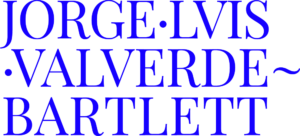Design as a discipline can and should propose a new perspective, researching, of course, for developing a company’s economic and social productive capacities through its core value: planning.
The importance of Design in this client-company-market relationship, in my opinion, lies in five fundamental aspects:
1. Functionality
Any planned activity or action will always be much more functional than an unplanned one. For example, configuring this functionality has been the starting point for developing new technology. Seeking new problems to solve is the first step to innovation, and innovation comes with a discipline (Design) and a focus (corporate processes that we want to improve). Due to excessive planning, I’ve seen colleagues who have ended up in the same place as healers, oracles, and corporate fortune tellers.
2. Integration
Finding new ways to think about and connect corporate situations makes creativity solve problems of objects, people, departments, directions, and administrations in unexpected ways. This method constitutes the best bridge to innovate/improve and build knowledge and collective value.
3. Communication
Design is a way to forecast the corporate environment because it strives for ways to convey and materialize ideas through language. It allows an internal connection that strengthens teamwork to reach a synergy of processes that helps stakeholders, employees, and management make informed decisions, preliminarily measuring at least a psychological impact and empathizing with collaborators. People tend to think that designing is only creativity applied to a product or service. Still, Design is an organized structure of thinking that requires a profound cultural background, specialized knowledge, and state-of-the-art technology.
4. Entrepreneurship
Generating ideas is not enough; it is necessary to set them in motion. In the corporate or industrial world, the discipline of Design is a must because it can set up environments that view problems as opportunities and transform those opportunities into sustainable realities over time. Intrapreneurship is and will be the best way to build a brand.
5. Evolution
A designer’s work can be understood as a tool for evolution that helps a company face the complexities of the market. Design is not a savior of a company’s social or economic problems but a significant contribution to finding new ways to solve socio-economic dilemmas.
The study of the emotional benefits of participating in an organization that has adopted Design as a way of life is still in its early stages. But it is not less than true that Design, in all its forms, is becoming increasingly prominent in planning every economic activity.
In today’s world, where information, communication, social development, and the need for individual or collective economic and productive progress are crucial, analyzing a company’s economic, political, and social problems through a design lens is essential. This approach can strengthen the analysis and provide a comprehensive understanding of the issues, not just on a national level but also on a global scale.
I have seen companies fall for needing to be more creative and adaptable, but I have also seen companies disappear for being the opposite, extremely innovative and biased.
In my experience, companies, executives, and administrators who understand Design beyond graphics, videos, objects, clothes, and other products will go further, be better prepared, and above all, be willing to change; a change that often – if not always – is very expensive or makes them disappear.



